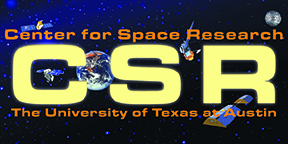 |
 |
 |
 |

Srinivas Bettadpur
GENERAL RESEARCH INTERESTS
Space Geodesy and Spaceflight Mechanics; Earth System Science from Space.
CURRENT RESEARCH THRUSTS (Fall 2023)
Some are mature, others are nascent - all of these feature dynamics, modeling, estimation and interpretation...
- Dynamics of the Earth system from satellite gravity measurements
- Global mass flux estimation, validation and interpretation, including in near real-time
- Teasing out the parts-per-billion gravity information for diverse Earth sciences & applications
- Global to local connections, and the march to the highest resolutions
- What does this all tell us about the dynamics of the Earth system?
- Global Space Geodesy and Orbit Determination
- Do the next generation needs require that we integrate Terrestrial and Lunar geodesy? What are the challenges?
- Global reference frames for precision Earth system science and for Positioning, Navigation and Timing (PNT).
- Can we achieve the 1-mm precision orbits? How can we even tell?
- How do we apply tomorrow's technologies for Space Geodesy & Earth System Science?
- Explore innovative concepts and methods for gravity field sensing at all spatio-temporal scales from space.
- Use of laser interferometry, cold-atom technologies, precise clocks, drag-free flight, etc...
ACTIVE RESEARCH PROJECTS
Gravity Field & Earth System Science: Projects in this theme are intended to seamlessly bridge between technology, space mission architecture, and science.
Quantum Sensing in Space - The quantum sensing era has begun at CSR, with its focus on the measurement of mass change and gravity field for next generation climate sciences. For my group this is the most significant thrust of research expansion. Two projects for which I serve as a PI form the foundation.
The Quantum Pathways Institute, a NASA/STMD sponsored Space Technology Research Institute is a collaboration between UT (CSR, Oden, MRC), CU Boulder (JILA, CCAR, ECE), Caltech (GALCIT), and UC Santa Barbara (ECE). We envision a Quantum 2.0 inertial sensing approach to 1 E gravity gradiometry, ready for space in 10 years. This 5-year project, with a November 2023 start, advances that technology to TRL 3+ on three fronts: atomic physics, photonics, and systems engineering. My own research contributes to modeling, simulation, systems engineering and science.
My QGG Pathfinder Study is funded through a NASA Earth Science Instrument Incubator Program (IIP21) grant, in collaboration with JPL, where I undertake the development of science applications and space mission architectures for mass change measurement using “conventional” cold atom interferometer techniques. Thrusts here include flight dynamic studies that allow exploitation of quantum sensing, covering flight environment, flight dynamics (attitude and orbits), science concept-of-operations, and related space mission architecture.
The Next Mass Change Mission(s) - We study the links between theory, observation concepts, and technology trade studies for the full range of spaceborne gravity field (and mass change) observation concepts. The joint NASA/DLR Mass Change mission is nearing Phase-B. This mission responds to the consensus community needs articulated in the 2018 Earth Science Decadal Survey. At the same time, NASA and ESA together explore MAGIC –constellation gravity mission concepts to obtain order of magnitude improvements in mass change measurements with twin pair mission concepts.
GRACE Follow-On (https://gracefo.jpl.nasa.gov) - The NASA/GFZ GRACE-FO mission launched on May 22, 2018. I contribute space geodetic algorithm development and mass-change validation results to the wider CSR efforts on behalf of this mission. An important component of this research is also the development and operation of the Global Flux eXploratory (GFX), where we run the MITgcm, forced by CFS/GDAS atmospheric fields to reproduce the non-tidal variations in the atmosphere and ocean, for real-time applications.
Reference Frames and Space Geodesy: This theme addresses precise positioning for local and global reference frames, for driving applications in sea-level science and precision PNT. This work is intimately associated with the establishment and growth of the McDonald Geodetic Observatory (MGO - https://www.csr.utexas.edu/mgo/).
Terrestrial Reference Frames (TRF) and mm-Metrology at McDonald Observatory -This project is transitioning out of an NGA University Research Initiative (NURI, 2020-22), studying scale instability in multi-technique reference frames, and related topics in fundamental science and metrological techniques for the TRF. The work started through a NASA-ROSES grant, which ended in Feb 2019, which looked at mm-precision laser metrology to aid the realization of next generation terrestrial reference frames.
Following projects are now concluded, but my hope is that the accomplishments from these projects will lead to more interesting work in these areas in the future.
GRACE (http://www2.csr.utexas.edu/grace/) - The NASA/DLR GRACE mission ended in late 2017.
GSFC/Drought & Flood - This collaboration with Matt Rodell (Hydrological Sciences Branch at GSFC) deals with the use of GRACE and GRACE-FO data with the lowest possible latency, tuned for North American flood and drought applications.
Water Cycle in Texas & Northern Mexico - In collaboration with MAGIC group at (UTCSR), we are expanding research into the joint use of GRACE/GRACE-FO, NDVI (from MODIS), precipitation and other available remote sensing resources for the characterization and understanding of the water cycle in Texas and Northern Mexico. A post-doc joined in 2016 and is helping us take this to the next phase of expansion.
Bangladesh & GRACE - This collaboration with colleagues at LDEO (Columbia University) is completed, and led to us testing the smallest spatio-temporal resolutions to which water loads could be meaningfully extracted from the GRACE data.
Drag-Free Systems for Satellite Gravity - A collaboration with colleagues at JPL, this project is wrapping up a study on the specification of requirements for a drag-free system for next generation gravity field measurement missions. The outcomes should inform future space mission design studies.
OGMOC - With this collaboration with TU-Munich and DTU, lasting through mid-2017, we looked at optimal combination of GRACE and GOCE data for the purpose of obtaining the best estimates of geostrophic ocean currents using satellite altimetry and the geoid.